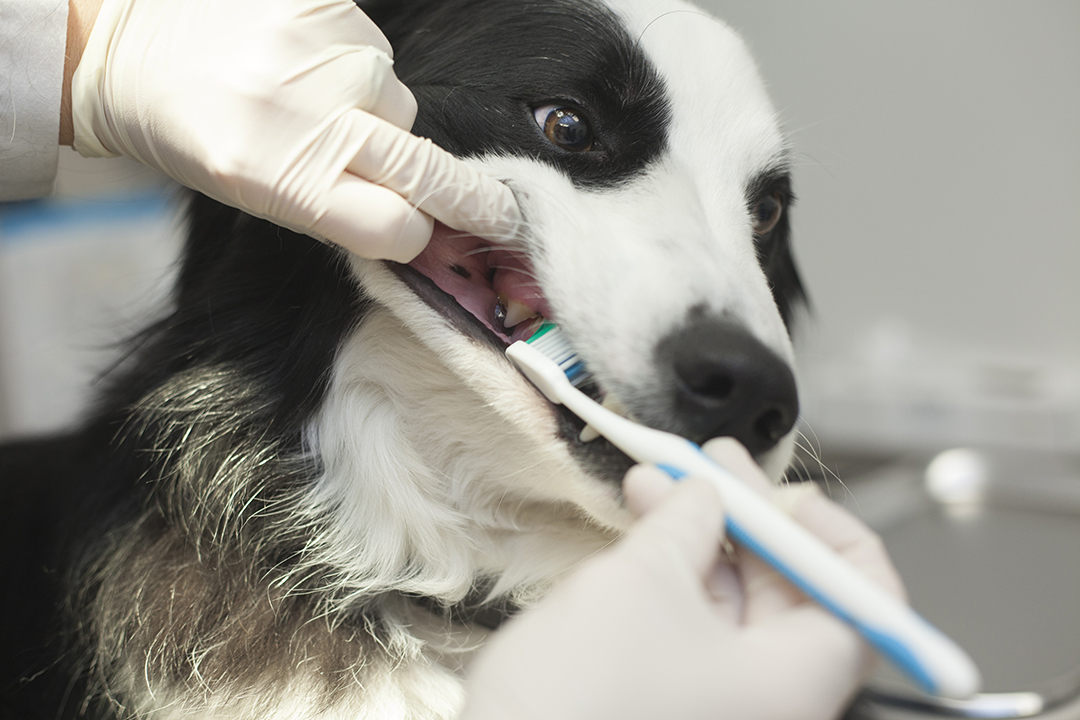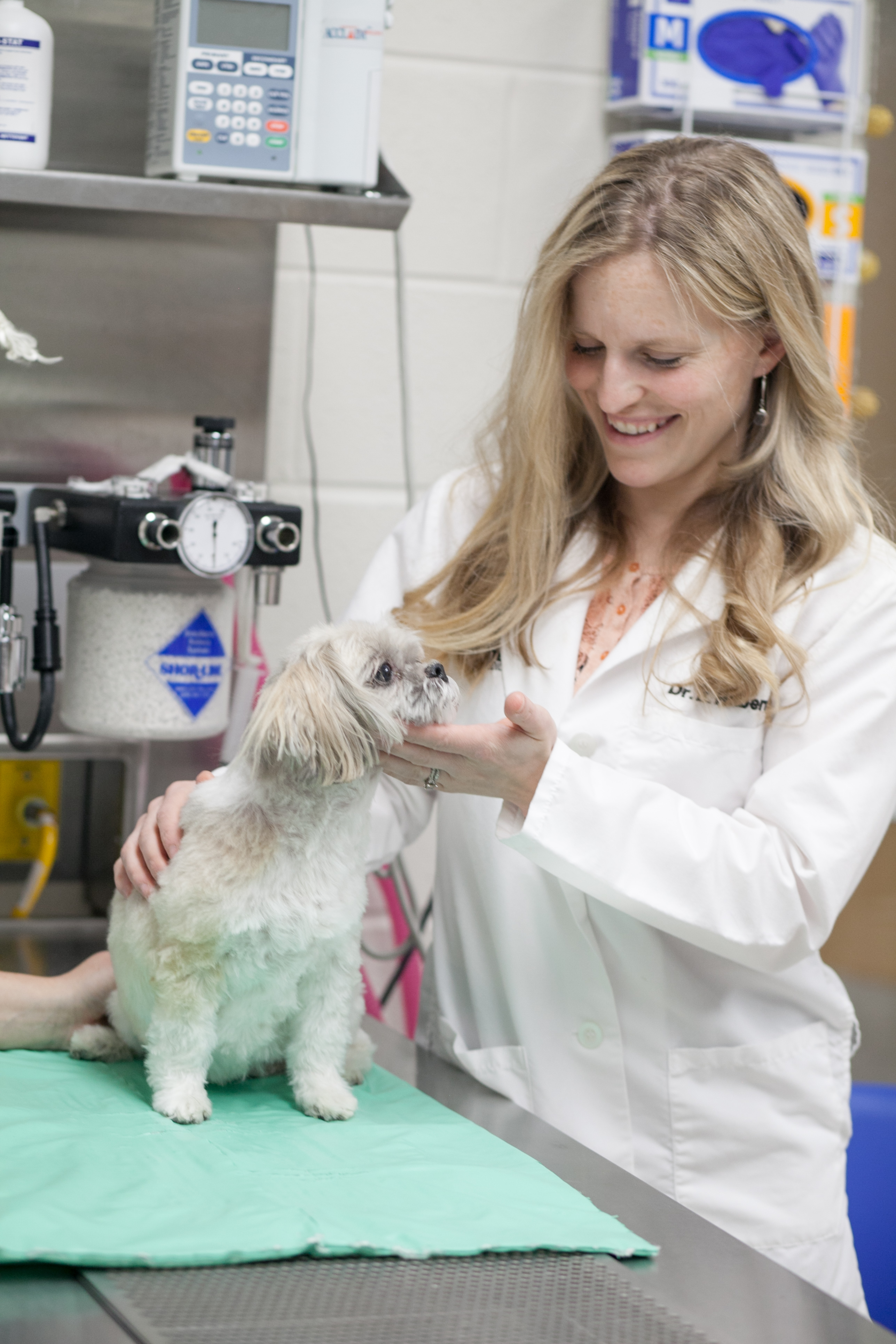
Detection and prevention can keep periodontal disease at bay
“Dental disease” includes many oral-dental conditions in pets, but the most common one is periodontal disease — a type of bacterial infection that can greatly affect an animal’s general health and well-being if left untreated.
By Meara Munn-Patterson
“Material collects along the gumline in a ditch (the sulcus) around each tooth and attracts bacteria,” explains Dr. Erinn Hilberry, a clinical associate in the Veterinary Medical Centre’s (VMC) dentistry service. “The infection that ensues leads to destruction of the tooth’s bone and surrounding structures, leading to tooth loss or death.”
The disease process is painful and can cause negative, downstream effects in other organs that result from bacteria entering the bloodstream through the inflamed tissue surrounding each tooth. Chronic dental disease may also affect a dog’s behaviour and reduce its ability to cope with other diseases such as diabetes or kidney disease.
As Hilberry explains, the impact of severe periodontal disease is like having the flu all the time.
Fortunately, periodontal disease is preventable and treatable. Once a dog begins treatment for periodontal disease, the effects are instantaneous: “The tissue looks healthier as you go [through a dental procedure], and owners often comment afterwards that their dog is a ‘new dog’ and acts like a puppy again,” says Hilberry.
In addition to regular dental checkups, Hilberry emphasizes the importance of regular home dental care. Daily brushing of your dog’s teeth promotes healthy teeth and prevents disease. Regular brushing is particularly important for smaller dogs and specific breeds that are more prone to periodontal disease.
“Small dogs are much more likely to get periodontal disease and have more severe forms than larger dogs,” Hilberry explains. “Their teeth are proportionately too large for the amount of bone. This results in increased crowding and malocclusion which increases the likelihood of dental disease.”
Small dogs are more commonly afflicted with skeletal malocclusions (such as underbites and overbites) that often lead to an increased incidence of periodontal disease.
Hilberry also points out that some dog breeds are prone to specific types of dental issues. For example, dachshunds frequently have “pockets” around the inside of the upper canine teeth that can develop into oronasal fistulas – holes in the bone of the upper jaw connecting the nasal cavity and mouth.
However, finding these pockets early allows for treatment that can prevent oronasal fistulas and save the canine teeth from extraction.
Because early diagnosis is so important, a research team led by veterinary dentist Dr. Candace Lowe at the Western College of Veterinary Medicine (WCVM) has been investigating the use of computed tomography (CT) scans for detecting dental disease in dogs.
Meara Munn-Patterson of Fort McMurray, Alta., is a third-year veterinary student at the Western College of Veterinary Medicine (WCVM) whose research position was supported by the WCVM Interprovincial Undergraduate Student Summer Research Program in 2020. Her story is part of a series of articles written by WCVM summer research students.
